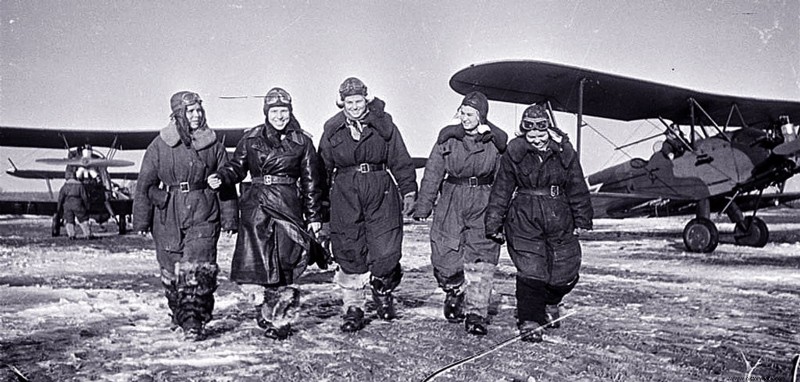We are in 1941 , in the most difficult moment of the Second World War when it appears that the Third Reich is about to fold Great Mother Russia :it is precisely then that a group of Soviet girls, rejecting any male presence, manages to conquer a leading role in the battle against Hitler , contributing to the defeat of Nazism.
And it does so by piloting, like no man, very fragile biplanes :they are old planes, designed in the late 1920s, until then used only to spread chemicals on agricultural land .
The three glorious regiments were the 586th (bomber fighter) commanded by Tamara Kazarinova (Air Force officer decorated with the Order of Lenin), the 587th (dive bombers) commanded by Marina Raskova herself and the 588 ° , (for night bombings) commanded by Evdokiya Bershanskaya .
These aviators, under the flight outfit, wore normal female clothes, and, in the case of shooting down or forced landing in enemy territory, they threw the overalls and could be easily mistaken for peasants, so the Germans found the 'plane but not the pilot.
The most notable thing about these heroic Soviet women, with just two or three months of training before flying and fighting, was that they were flying some old-fashioned wooden and canvas airplanes , manufactured in 1927 , the biplanes Po-2 [Polikarpov Po-2] which were generally used for fumigation or airmail.
These wooden aerial lenses however, were sturdy and high-gliding capability, ideal for the near-suicidal actions of these brave young Soviet women.
While their male companions during the day bombed the fascist positions on the Russian front, these female pilots always flew at night, without radar or radio, orienting themselves with a compass and a watch.

To avoid enemy detection they flew very low and, off the engine, glided over their targets dropping their bombs on the enemy, then restarted the engine and flew at full throttle.
They preferred not to use the parachute to carry more bombs, also because, if they were discovered or shot down, flying so low, the parachute would be useless, and generally they loaded themselves with small incendiary bombs, usually to be thrown by hand, to the place of the parachute.
Despite all these negative elements, they were much feared by Hitler's troops, so much so that they were called with deep awe and respect " Nachthexen ”That is“ Witches of the night “.
The Nazis granted an Iron Cross to those who managed to shoot down any of these heroic young women, who were almost imperceptible:only a slight hiss that produced the wind rubbing on the wings of their biplanes was the announcement of death heard by the German troops.
The female night bombardment regiments carried out 24,000 flights during the war and dropped 3,000 tons of explosives on the invaders.
One in three women in the night bombing regiment died in combat. 23 of them received the Order of Heroines of the Soviet Union .
Most of them received posthumous decorations, including Marina Raskova , which on January 4 of 1943 she gave her life fighting in the fight against Nazism.
For the Nazis they were the Night Witches, but the Soviet people knew them as Stalin's Hawks.
